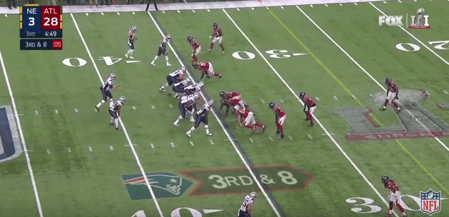When a new president of a company takes over a company or when a new sales manager takes over a sales team, you can imagine what happens, right? There were already people there as a result of the previous administration(s). Those people, inherited by the new leader, chose to stay based on the previous leadership and characteristics of that leadership. (HBR book on leadership).
2 QUESTIONS TO ASK WHEN “INHERITING” A SALES TEAM
Now, what happens when new leadership “inherits” and takes over a previously established sales team? Chaos, push back, dissension and political jockeying - sound familiar? I imagine it does, but that isn’t the point I want to make now. The point I wasnt to address here is that, when you find yourself in this situation, there are two questions that need to be immediately asked and answered.
- What happens to productivity, growth and stability when there is a lack of teamwork?
- How do you fix it?
IGNORING EXECUTIVE ORDERS… WHAT?!?!
Every POTUS comes into the office hoping to make a significant positive contribution to our country and citizenry. No one takes the oath of office with the intent of doing harm or “screwing it up”. Unfortunately, that doesn’t mean it doesn't happen and no President evert goes unscathed or un-criticized by those who didn’t vote for him/her (Hillary would have made that statement end with her!).
Trump’s Executive Orders to restrict immigration from certain countries and the resulting backlash puzzles me. Not because of the opposing views on the executive order but because of my lack of understanding of how our federal and state governments work and/or don't work together. I had no idea that a judge in Washington could weigh in on such a matter as an executive order and declare that the state of Washington could ignore not just this executive order, but any executive order.
Presidents and number of executive orders in my lifetime:

Since I became an eligible voter, I had not previously heard of any judge at any time weighing in on executive orders. I admit that I may have missed them. And so, what I’m really admitting to is that I don’t know how the whole thing works. What I do know is that, for any organization to win more than it loses, it needs people that have a strong sense of teamwork who are willing to sacrifice their own personal agendas for the good of the team.
Teams work or don’t work, win or don't win based on the following:
- Strategy
- Effort
- Execution
- Performance Management
- Motivation
- Coaching
- Talent Acquisition
SUCCESS REQUIRES EVERYONE’S SUPPORT
In order for a team to succeed, the strategy for the company has to be supported by the entire company. There has to be alignment and support! The middle manager in Washington cannot decide to not put forth the effort or choose to not execute the strategy simply because they disagree with the strategy. If that’s the case, then that middle manager can no longer be part of the team.
To avoid this type of problem, the company's hiring strategy has to consider cultural fit. In the case of government, teams and companies, one of the components of cultural fit to be considered is the Team Player.
THE MOST IMPORTANT QUALITY OF A TEAM PLAYER
A team player is one that sacrifices their personal agenda for the betterment of the team. They are willing to do everything possible (assuming legal, ethical and moral standards) to assist the team in winning.
Linda and I recently attended the Sycamore Athletic Boosters Hall of Fame Induction dinner. Our friend, John Traub, was one of the inductees. John Traub, a former wrestler and current teacher’s aide at Sycamore High School, holds several school records in wrestling, has coached state champions there and was instrumental in establishing the youth wrestling program in our community.
Also, on the list of inductees, was Bailey Su.
While at Sycamore, Bailey Su played tennis and lacrosse. She went on to college at Northwestern where she played on the 3 time NCAA National Championship team. She recalled that her coach taught her about teamwork, the value of the team and how you have to sacrifice your own interests for the benefit of the team. She shared a story about a time when she and a team mate decided to donate blood. This left them tired and lethargic for practice. When their coach questioned them about this, he became enraged at their selfishness.
I know this sounds strange and I assure you that everyone in the audience was uncomfortable with the story about the coach, but Bailey insisted that it was a very strong lesson for her. She indicated that she could have accomplished the same thing another way without doing harm to the performance and goals of the team.
SCREEN FOR SKILL AND WILL
Do you have players who think that way… or do you have people on your team who are all about themselves and only think about their own needs? Do you look for the team mentality when you are interviewing candidates? What else are you looking for to make sure there is a fit? How well do you screen for those soft, emotional intelligence, cultural characteristics and behaviors that may cause you to think 6 months down the road that this wasn’t a great hire because of fit?
I recently wrote an article about making sure you always assess candidates for “skill and will” before you start the interview process. That step is just that – a step. And even that step must be put into perspective. You need to make sure you have a scorecard that clearly spells out what it takes to be a successful team player IN YOUR ORGANIZATON, not just on how to be a successful sales person. That scorecard must include “team player”.


